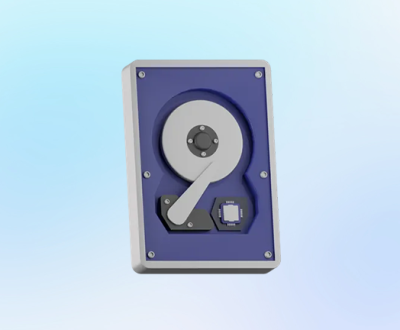Accidentally deleting the Macintosh HD can be a terrifying experience for any Mac user. This vital drive serves as the main storage for your operating system and personal files, and its unexpected disappearance can lead to panic and uncertainty. Understanding how to recover this crucial component is essential for protecting your data.
The Macintosh HD is more than just a storage space; it’s the heart of your Mac. It typically houses the macOS operating system, applications, and user data, playing a critical role in your computer’s overall functionality. Understanding how this drive is structured primarily as APFS (Apple File System) in newer macOS versions or HFS+ (Hierarchical File System Plus) in older versions can help you grasp the implications of a deletion.
Accidental deletion can occur for various reasons, such as mistakenly selecting the wrong drive in Disk Utility or misconfiguring settings. When this happens, users often panic, fearing they have lost everything. However, it’s essential to remain calm and follow a systematic approach to recovery.

Immediate Actions After Deletion
If you realize that your Macintosh HD has been deleted, the first thing to do is stay calm. Panicking can lead to rash decisions that might further complicate recovery. Avoid writing any new data to the drive, as this could overwrite files that are still recoverable.
Next, check the Trash Bin. Occasionally, files may be found here if they were merely deleted rather than wiped. If you can’t locate anything, open Disk Utility to see if the drive still appears. In some cases, the drive may be present but unmounted, allowing for potential recovery.
Preparing for Recovery
Before jumping into recovery methods, take a moment to assess the situation. If the drive is still visible in Disk Utility, that’s a good sign. If it isn’t, or if you suspect data loss, ensure you back up any remaining important files on your Mac. This might involve connecting an external hard drive or cloud storage.
Gather the necessary tools for recovery, including any external drives you may need for backups and any recovery software that might be useful.
Using Disk Utility to Attempt Recovery
To begin the recovery process, access Disk Utility by navigating to Applications > Utilities > Disk Utility. Once open, you’ll want to check if your Macintosh HD is listed. If it is, select it and click on the “First Aid” feature. This tool scans the drive for errors and repairs them if possible.
If the First Aid tool does not resolve the issue, you might try unmounting and then remounting the drive. To do this, select the Macintosh HD, click “Unmount,” and then “Mount” again. Sometimes, this simple action can bring the drive back to life.
Recovery Options if Disk Utility Fails
If Disk Utility proves ineffective, consider the following recovery methods:
Using Time Machine: If you have been using Time Machine, restoring your deleted drive could be straightforward. Connect your Time Machine backup drive, then go to the Apple menu and select “System Preferences.” Click on “Time Machine” and then “Enter Time Machine.” From there, navigate through the timeline to find the deleted Macintosh HD. Select it and click “Restore” to recover your drive and its contents.
Third-Party Recovery Software:
Panda Assistant is a powerful data recovery software designed to help users effortlessly restore lost or deleted files. Whether you’ve accidentally erased important documents, formatted a drive, or faced a system failure, Panda Assistant provides an effective solution to retrieve your valuable data.
Featuring an intuitive interface, Panda Assistant caters to both novices and tech-savvy users. The software supports a wide array of file types, including photos, videos, documents, and more, making it suitable for diverse recovery scenarios. Its advanced scanning algorithms ensure comprehensive searches across various storage devices, including external hard drives, USB drives, and SD cards.
Professional Data Recovery Services: If all else fails, consider enlisting professional help. Data recovery services specialize in retrieving lost data from damaged or deleted drives. While this option can be costly, it may be the ultimate solution for retrieving irreplaceable files.
Preventing Future Accidents
Once you’ve successfully recovered your Macintosh HD, take proactive steps to prevent future mishaps. Regularly back up your data using Time Machine or other backup solutions. This ensures that even if you accidentally delete your drive again, you’ll have a recent copy to restore from.
Familiarize yourself with Disk Utility and its features. Understanding how to navigate this tool will minimize the risk of accidental deletions. Additionally, consider creating a separate user account for sensitive actions, reducing the chances of making critical mistakes.
Accidentally deleting your Macintosh HD can be a daunting experience, but recovery is often achievable through careful actions and the right tools. This guide has outlined immediate steps to take, various recovery methods, and preventive measures to safeguard your data in the future.
Remember, the key to effective data management is regular backups and a cautious approach when using utilities. With the right knowledge and practices, you can confidently navigate the complexities of data recovery and keep your important files safe.
About us and this blog
Panda Assistant is built on the latest data recovery algorithms, ensuring that no file is too damaged, too lost, or too corrupted to be recovered.
Request a free quote
We believe that data recovery shouldn’t be a daunting task. That’s why we’ve designed Panda Assistant to be as easy to use as it is powerful. With a few clicks, you can initiate a scan, preview recoverable files, and restore your data all within a matter of minutes.
Subscribe to our newsletter!
More from our blog
See all postsRecent Posts
- How to recover deleted word document 2025-07-09
- How to recover deleted photos on sd memory card 2025-07-09
- How to recover completely deleted files 2025-07-09

 Try lt Free
Try lt Free Recovery success rate of up to
Recovery success rate of up to









